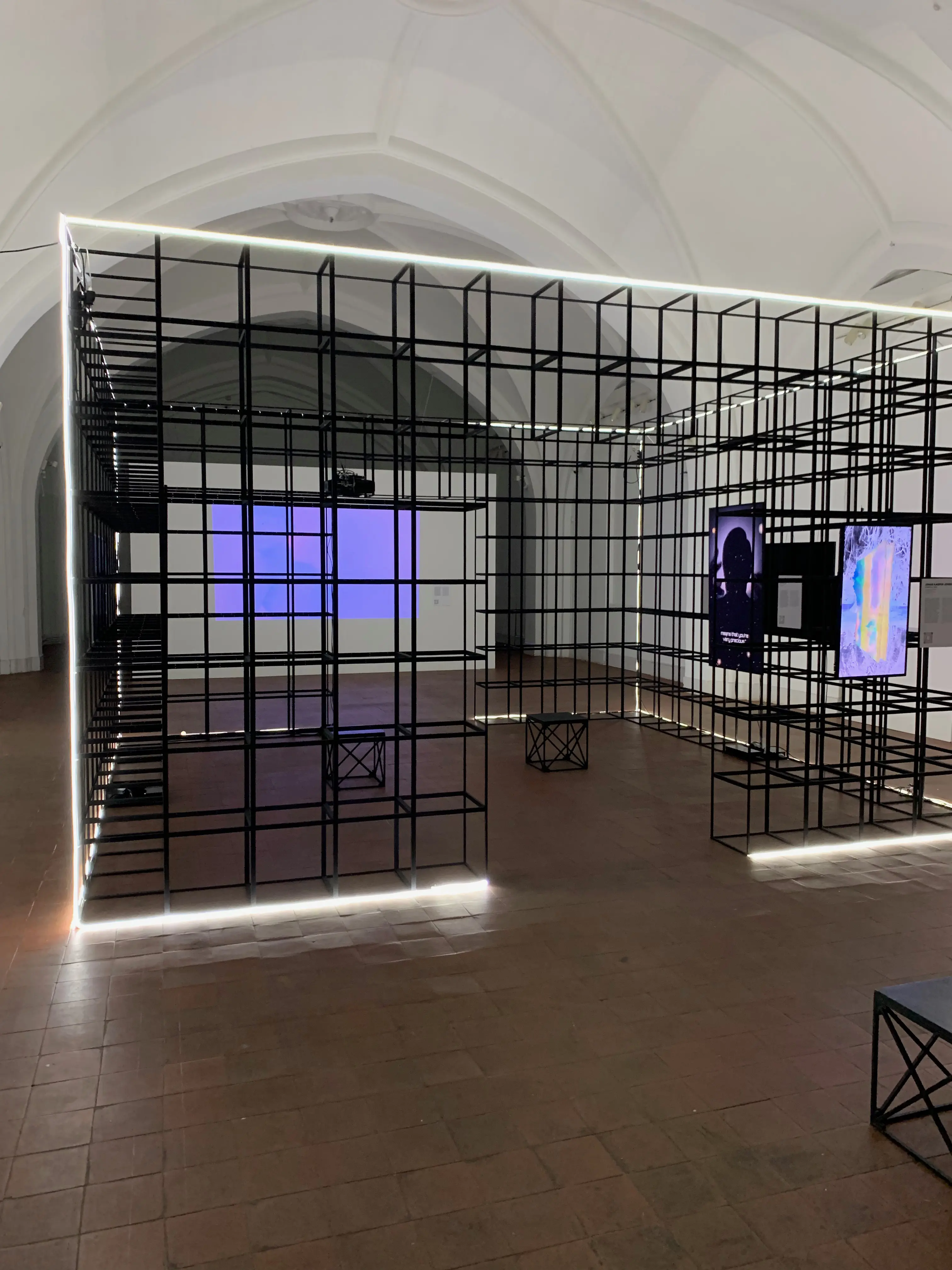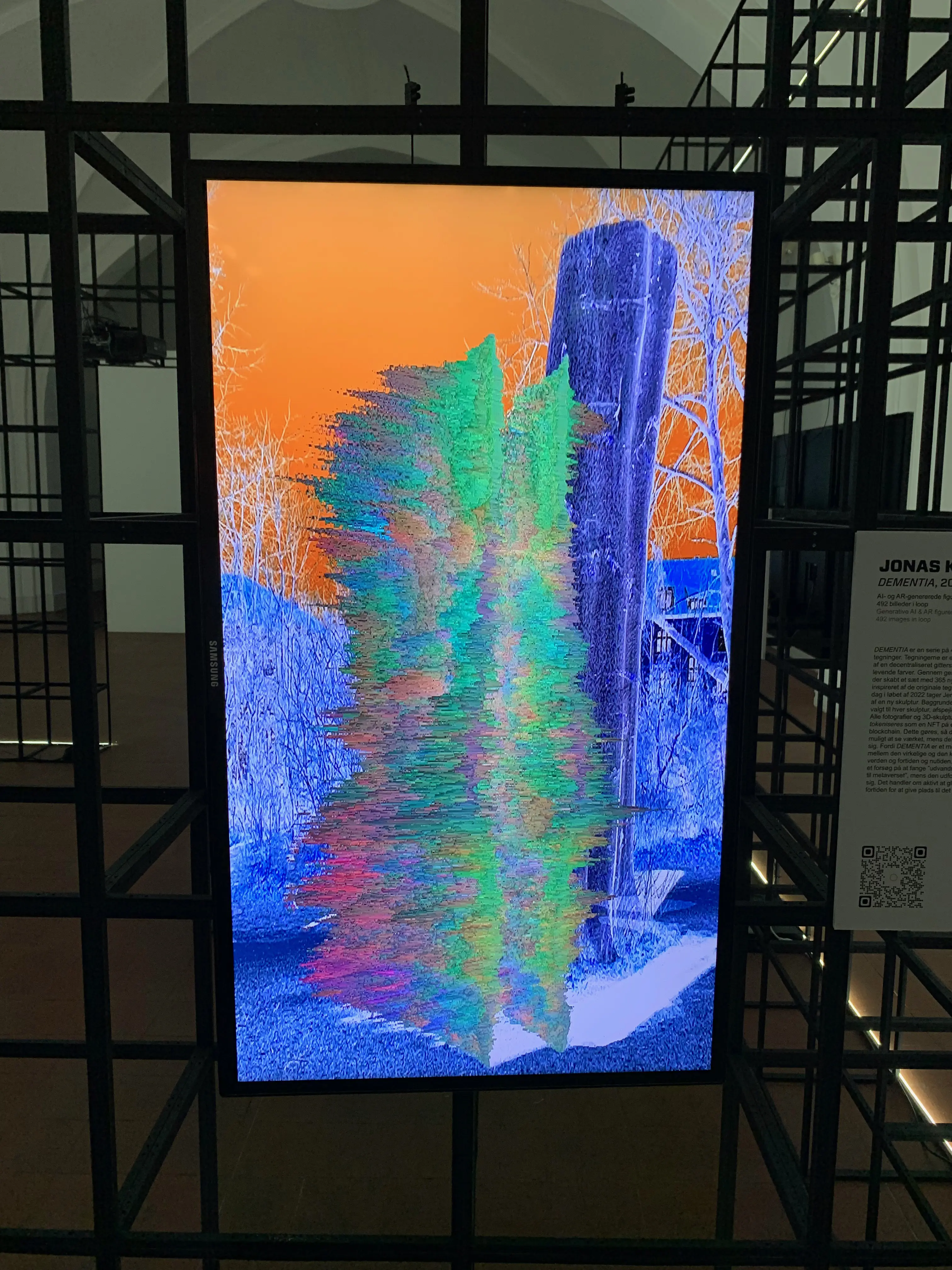I have written about NFT and art on this page before [1], and although a lot of the thoughts I presented in that text is still valid, I have since continued to explore the space of crypto art and developed some new thoughts and insights on the topic. So much so that it required a new text. A text that will centre around the NFT exhibition that is currently (October 2022) being held on the contemporary art museum Nikolaj Kunsthal in Copenhagen.
The exhibition is called CryptoPong, a reference to the ground-breaking videogame Pong which was released 50 years ago, as well as a reference to the NFT project Crypto Punks [2]. It occupies an entire floor of the repurposed church that houses the museum and features works from a little over a handful of artists. CryptoPong is the very first exhibition of its kind in Scandinavia, and among the first in the whole of Europe. It is not entirely easy to describe the surreal feeling that arises from the clash between the old gothic environment and the twisted forms on display, but in a way, this also captures the conflict within the crypto space, between old and new, quite nicely.

When it comes to the works on display, there is one clear theme and that is how the works are making use of all the possibilities that is enabled by using a digital medium. The artist is no longer limited to producing freeze frames on a canvas or in plaster, instead they can choose and combine multimedia freely. Video, 3D animation, sound and even using AR and VR to place the digital in the physical world. All of this captured by the term VX.
Another common theme within crypto art, including the works in the exhibition, is the frequent references to previous eras of art history. The references cover all eras. It can be references to ancient classics, but it can also be more current references, like modernism or dada. For example, the work $HIT COIN CANS [3] in the exhibition explicitly references Piero Manzoni’s Merde d’Artiste [4]. It is a little bit curious that the art history references are so frequent. A well willing explanation to this could be that the artists want to show that they are aware of their roots and what came before them. However, I cannot shake the feeling that the constant art historical references stem from a sense of inferiority. As if the artists feel like they need to do everything they can to prove that what they are doing really is art. However, referencing previous revolutionary art movements in an attempt to validate themselves only gives the opposite impression. The referenced movements did not make excuses for themselves, they did not want to be part of the then current art establishment. And although the crypto art movement makes the same claims, one still gets the feeling that underneath the disruptive surface, there is a longing to be accepted by the art establishment or the mainstream.
So far in this text, more than halfway through, there have not really been any mention of blockchain as part of the art and this is because I do not believe that blockchain is an integral part of the art. There is nothing about the digital creations displayed on Nicolaj Kunsthal that really needs a blockchain. But at the same time as blockchain technology is secondary to the art, it is crucial for the emergence of the art movement. Because what it has done is that it has democratized art creation. It has provided smaller, alternative artists with a platform to reach out with their art. This started already with the advent of social platforms like Instagram, but NFTs has provided a way for artists to monetize their works that did not exist before. This has in turn allowed artists to be much more experimental, since they no longer must please the taste of a gate keeping gallerist to make money. This democratization has also allowed a much more diverse group of artists to participate, minority groups whose voices were not heard on the traditional art scene, which have further contributed to the evolution of this movement.
In many ways, it is hard to overstate the importance of this exhibition. For a long period of time, crypto art and NFTs have been ridiculed by the general public who has failed to see past the speculative hype. A problem that admittingly exists with NFTs but it also exists on the traditional art market, and maybe that could be the subject of another text. However, NFT pieces put on display by a well-established art institution is a huge step towards making people see the artistic value of those pieces, and it is an important step into changing the view of crypto art in general. And although this text has covered some problems I see within the scene I know I am glad that I had the opportunity to experience this first step, and I am very excited about following the evolution of crypto art because I believe that it is the art movement where all of the innovation and all of the new ideas currently happen. I believe that Crypto art is the avant-garde of our time.

